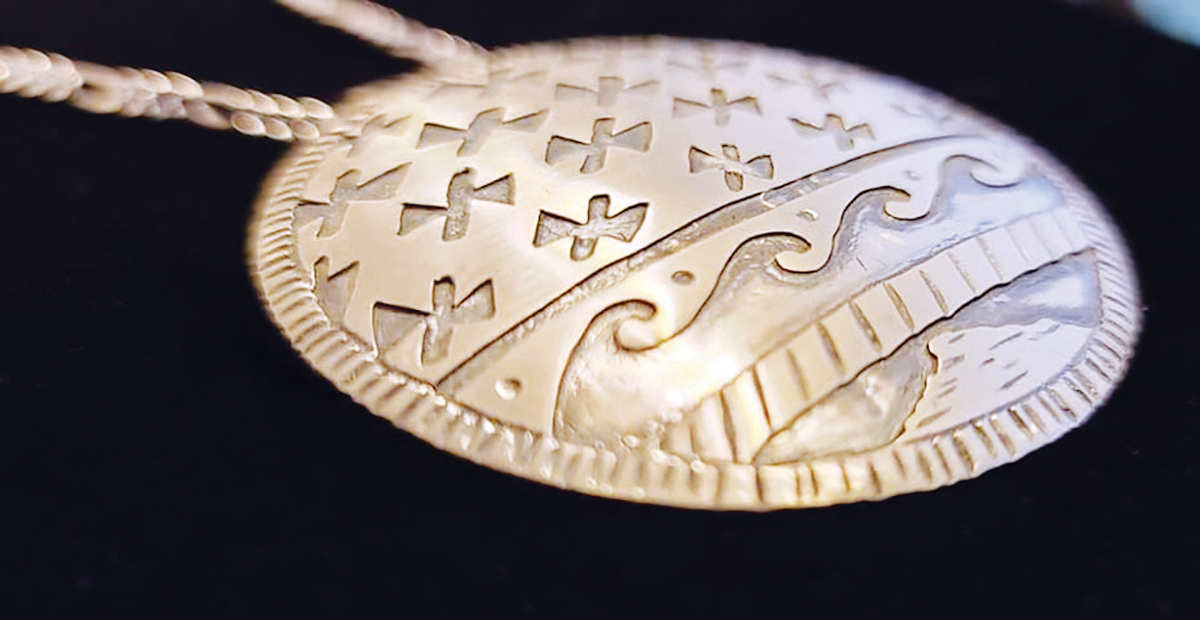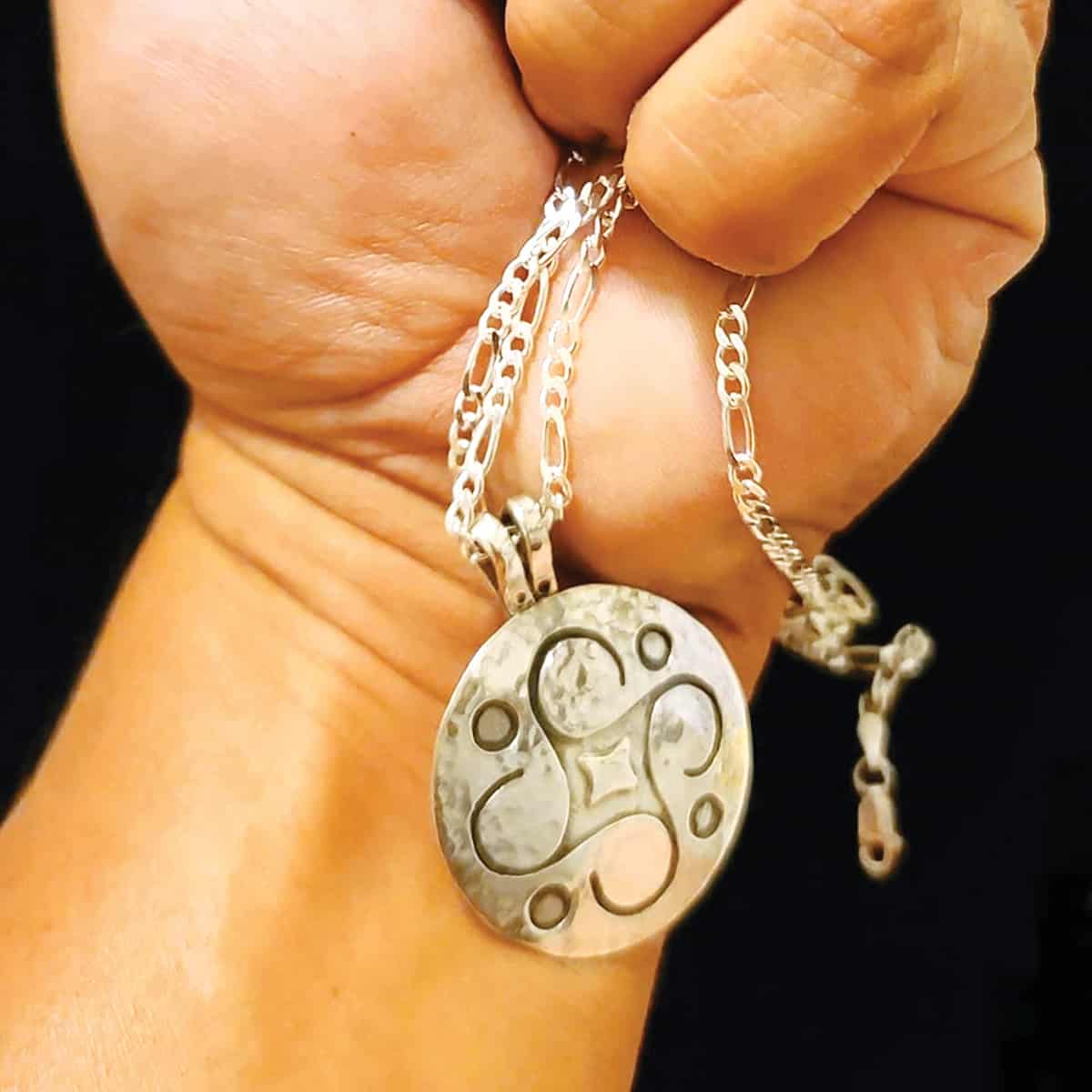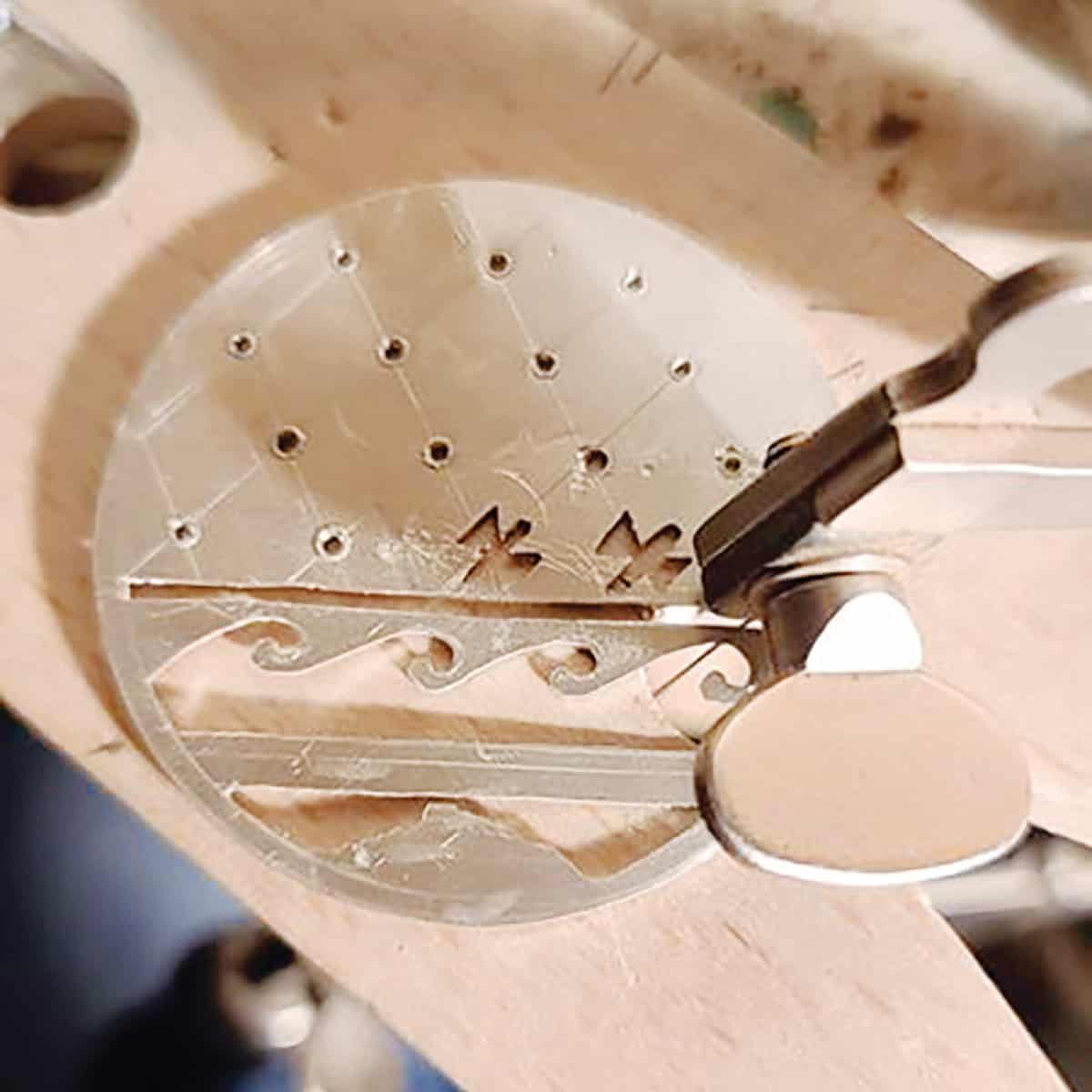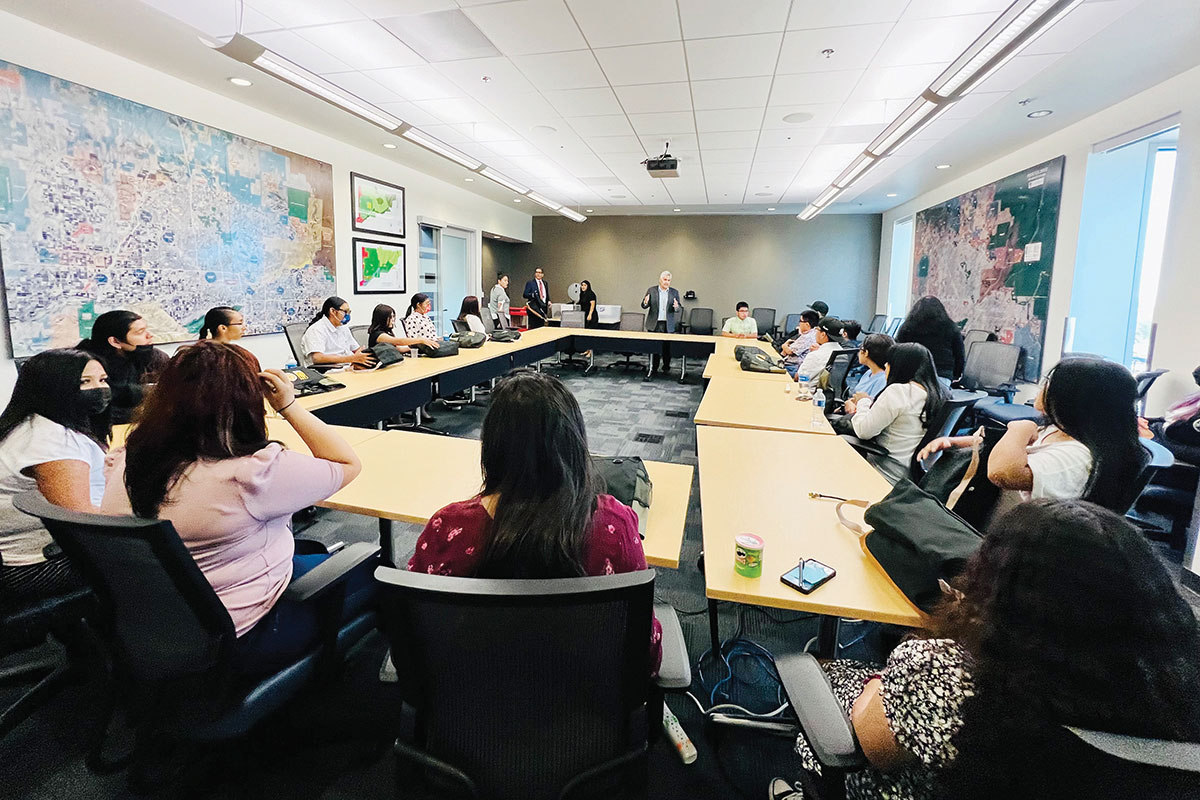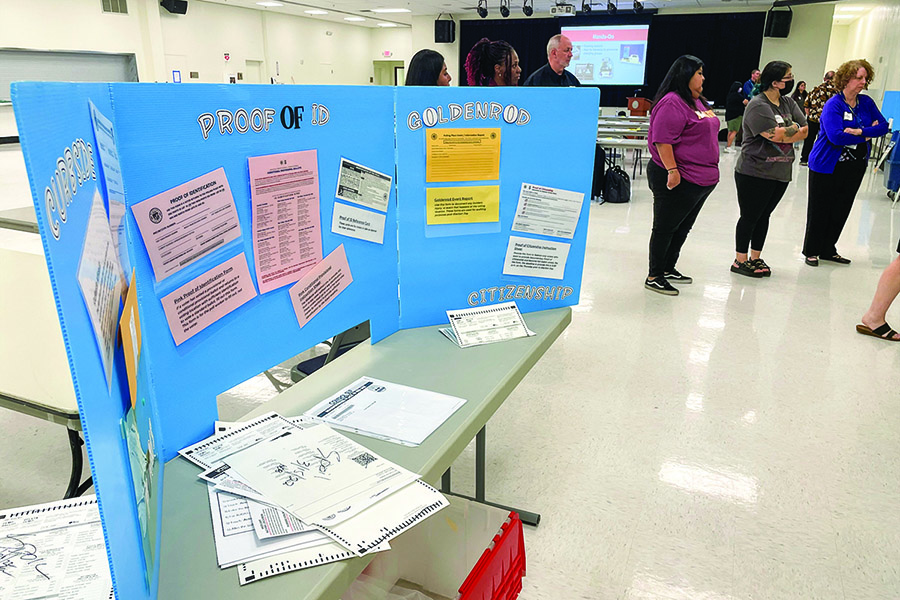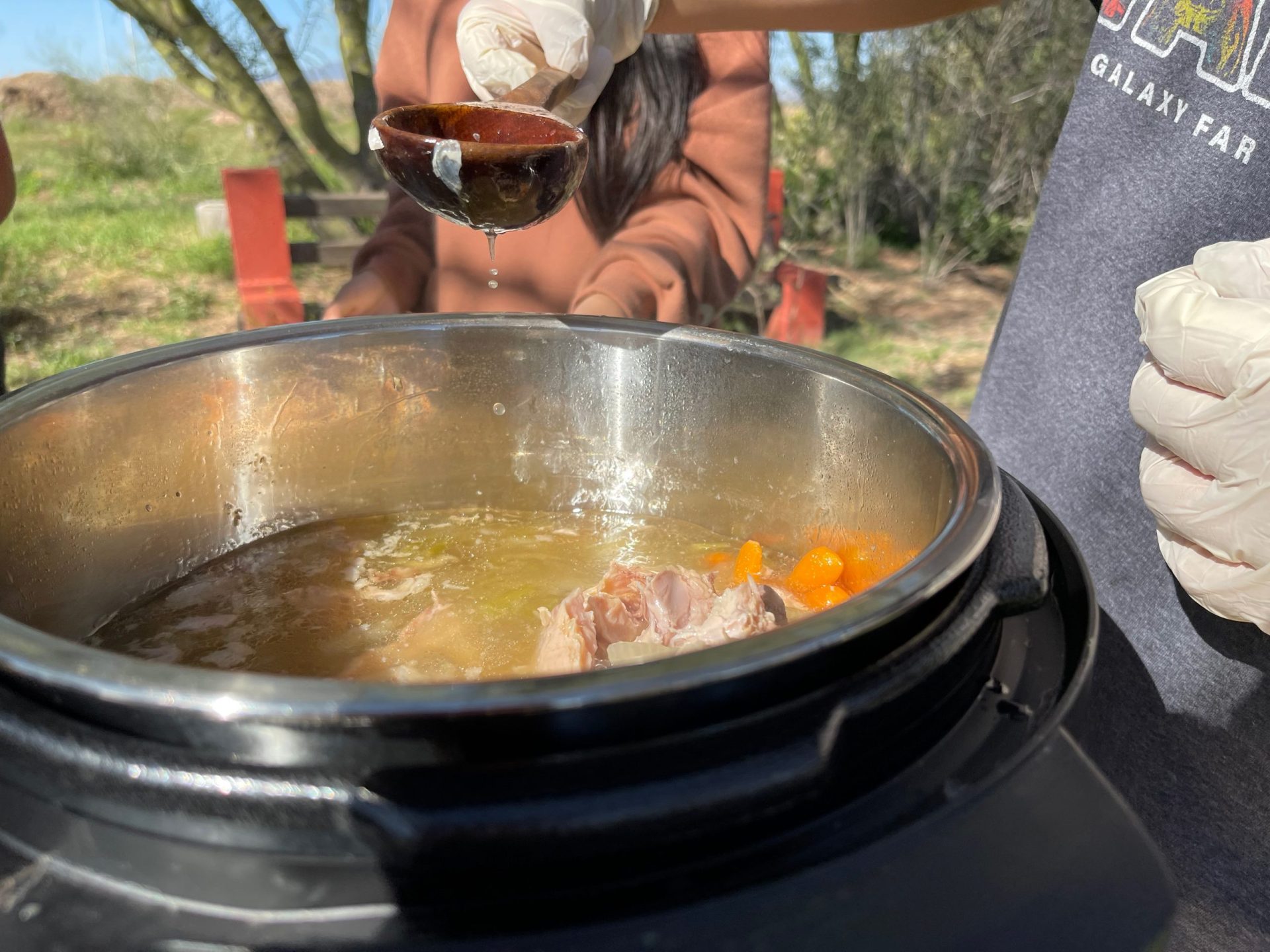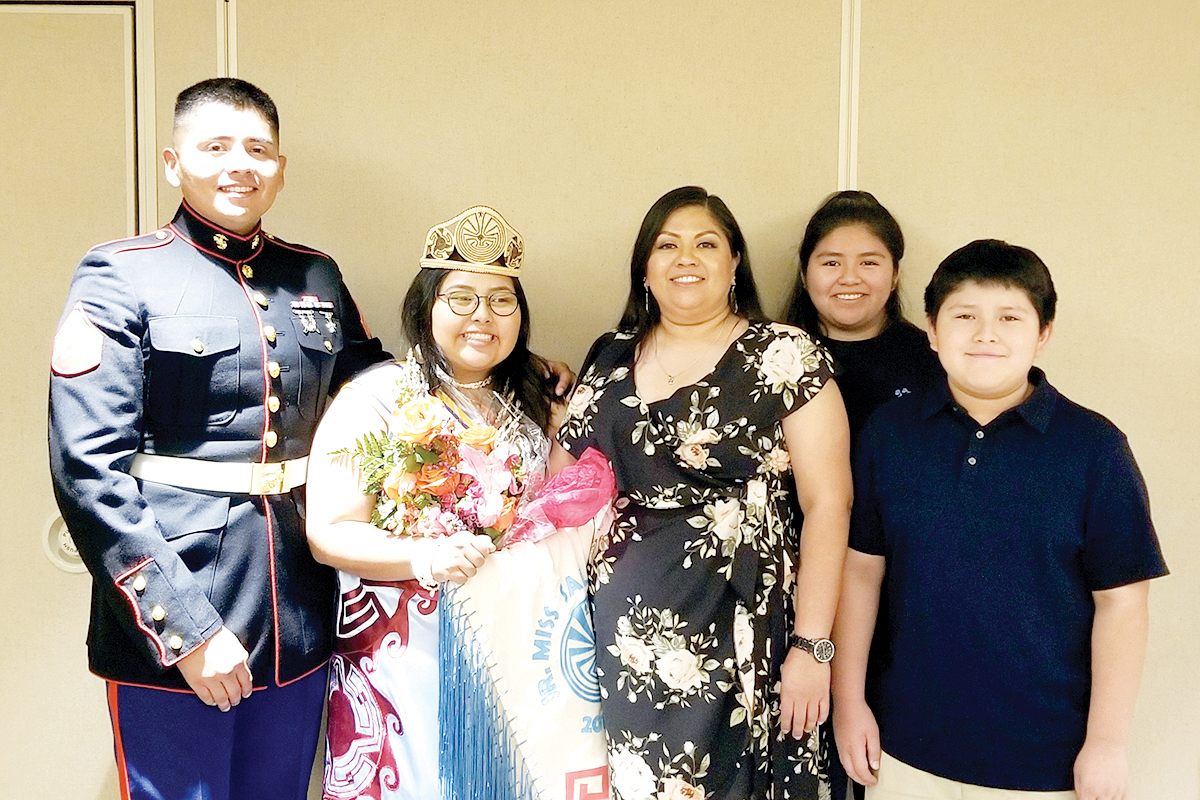VIEWS: 2145
June 4, 2020Jacob Butler Describes the Process of Pendant Making
Salt River Pima-Maricopa Indian Community member Jacob Butler has been learning how to craft silver pendants. He implements his visions of traditional designs within the pendants.
He described the process of getting everything ready and set.
“The process starts with the tools,” Butler said. “I use chasing tools to stamp the designs into the metal. They are small metal tools that are shaped like a flathead screwdriver. Some are skinny and flat, and others are dull and rounded a little at the ends. This helps to pull it across the metal as you hit it with a jeweler’s hammer or mallet. The strike imprints the mark into the metal, and as you pull it, it makes lines. But it’s a hard technique to get the hang of. An overlay design is cut with a jeweler’s saw on one piece of flat silver and then soldered onto another flat piece of silver. Then the piece is pickled in a hot solution that cleans the metal of any old flux (used to make the solder flow where you want on the silver) and makes it clean enough to do the next steps. I use a dapping block (a curved metal block for making domed features in silver) to curve the pendants into the shape I want. This curve looks good but also gives the piece strength so it doesn’t bend later when wearing.”
Butler described what he does next to fix any flaws he sees.
“After you get the piece in the shape you want and the design is in place, it is time to file any flaws away and sand the surface to take away big scratches,” Butler said. “I go up to a 3000-grit sandpaper, [then put the piece on a polishing wheel, where I rub on] a silver polishing compound and the piece is polished to a high shine. The metal gets really hot, and if you are not careful it could slip out of your hand and be flung from the polishing wheel, damaging the piece.”
Butler’s pieces take a long time to create. He explained that his works are “handcrafted” as opposed to “handmade.”
“I think it’s really important for me to say all my work is ‘handcrafted,’ not ‘handmade,’” Butler said. “Handmade is a piece that was built, created or put together by hand using pieces that were made and purchased for the craft. Handcrafted [means the piece] is totally created by the artist or craftsman. All the work I do starts as raw material, and I create my work from there. I think for me it matters that I know how to do something from scratch, and I am happy to be able to say I hand-crafted a piece.”
Butler is known for all different types of artistic expression. When reflecting on this, he explained that it comes down to what interests him in the moment.
“I could list a lot of other mediums I’ve worked in, but really it just comes down to me doing things I think are interesting and cool to do,” Butler said. “I get bored easily, and sticking to one thing really just gets monotonous for me and I start to get bored with it. Sometimes an idea I’ll have when making a rattle will be expressed in a shell or a pot, and the gourd will be put on the shelf to be finished at a later time. This is true in every medium I work in; it seems odd to others, but it works for me.
“My biggest interest is learning new things—that’s where I get focused and find my interest. The harder something is to do, the more I want to do it. Having so many outlets to express the things I want to express is awesome. When I get bored, I move on to something else or come back to something I had put down for a while. I guess you can say I work in circles, revisiting things when the time is right for me.”
Butler posts some of his work on Facebook; visit his page at www.facebook.com/jacob.butler.54584.


